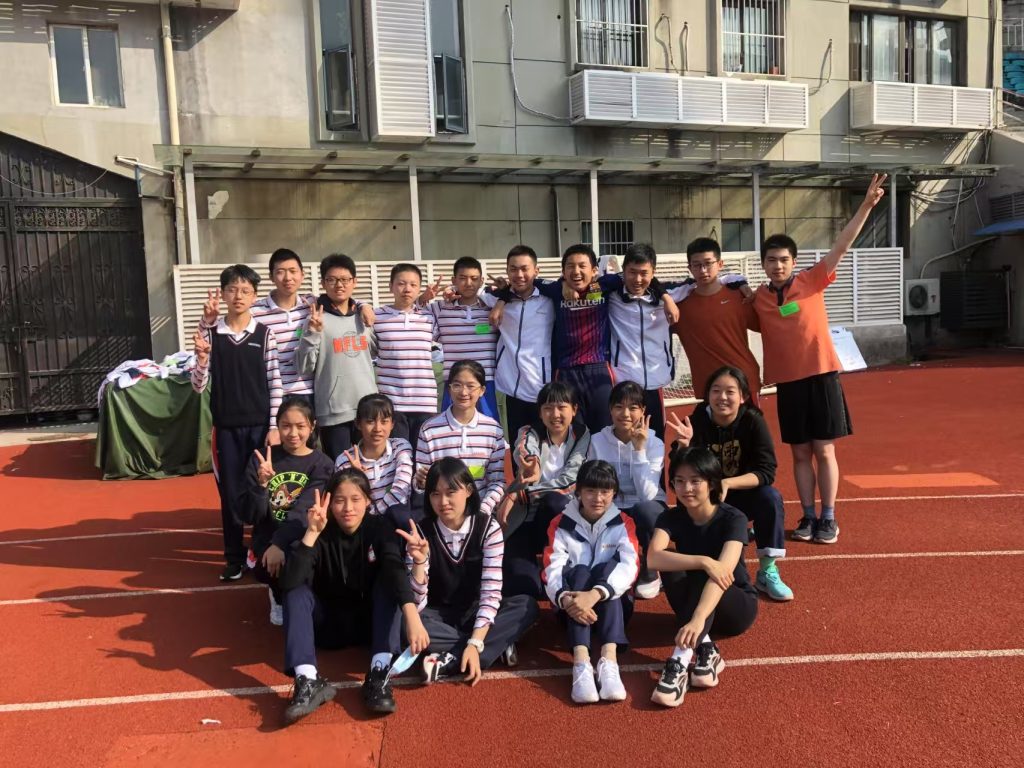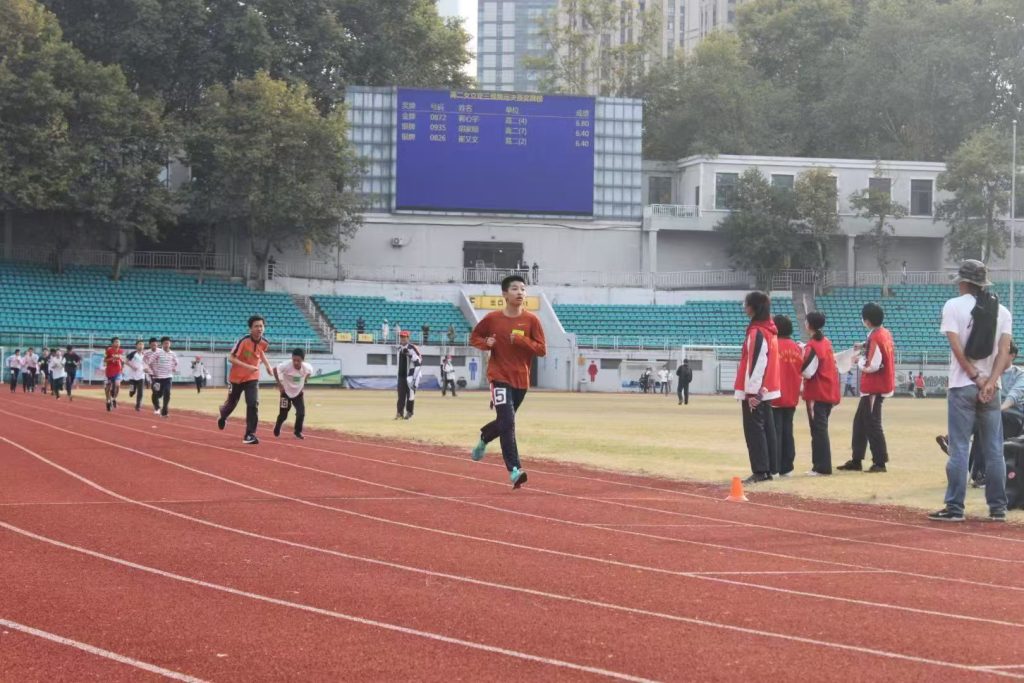On the scarlet track of Nanjing Foreign Language School, I left more than just footprints—I left behind puddles of sweat, a few tears, and enough self-doubt to fill a trophy case. For three years, that track was my proving ground. It was where I learned that grit is grown through scraped knees, early morning sprints, and the echo of teammates cheering you on—even when you’re limping.

My teammates and I—sharing joy, sweat, and unwavering support.
I still remember my first 400-meter race. The final turn hit me like a wall. My legs gave out, and I crashed onto the track, knees burning and pride even more bruised. I wanted to quit. But then, from the stands, a wave of voices lifted me up—my classmates shouting my name like I was about to win Olympic gold. I got up, bleeding and breathless, and crossed that finish line to the loudest applause of the day. I came in last, but I learned something far more valuable than how to win: that true strength is built in the moments we choose not to give up.
From that day on, 6 a.m. became sacred. While most of the school was still dreaming, I was out on the track, chasing not medals but progress. Running transformed from punishment to passion. It cleared my head, steadied my emotions, and gave me a rhythm for life. Somewhere along those lonely laps, I realized I wasn’t just becoming faster—I was becoming stronger, more focused, more me.

Track and field also taught me the art of teamwork. As the final runner in the 4×100 relay, I learned that trust weighs more than any baton. Each handoff wasn’t just a passing of an object—it was a declaration of faith. We weren’t just sprinting for victory; we were chasing a shared goal, four hearts pounding as one. During practice, we critiqued each other with brutal honesty and a lot of laughter. During races, we roared each other’s names down the lanes. We didn’t just become faster—we became family.
Most of all, the track became a place where I met myself. In moments of fatigue, I learned to whisper, “Just ten more steps.” In moments of failure, I told myself, “There’s always another race.” Through every training session, I built not only muscle but mental resilience. I began to see challenges not as obstacles, but as invitations to grow. That mindset seeped into my academics, my relationships, and my outlook on life.
Today, I carry the track with me wherever I go. When homework piles up or life gets complicated, I draw strength from the same inner voice that once told me to get up and run. The discipline, optimism, and resilience I gained on that red rubber loop have become the foundation of how I approach everything—school, service, and self.
At Nanjing Foreign Language School, character education wasn’t just taught in the classroom—it was lived on the track. That oval may have been 400 meters around, but it opened a world of lessons that stretch far beyond any finish line. And as I look toward the future, I know this much: I may not always be the fastest, but I’ll always keep running.
